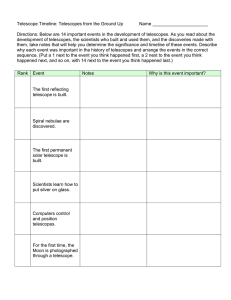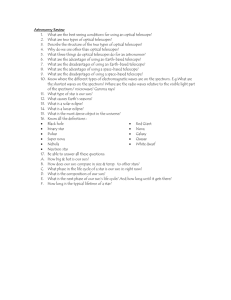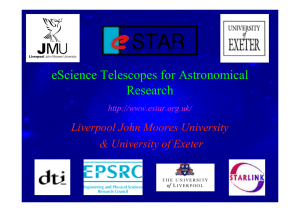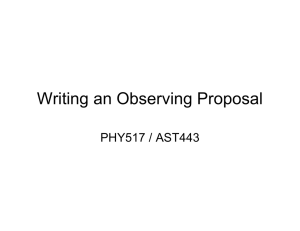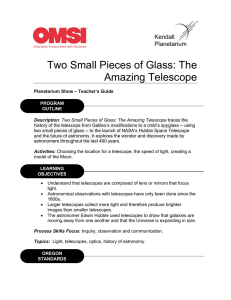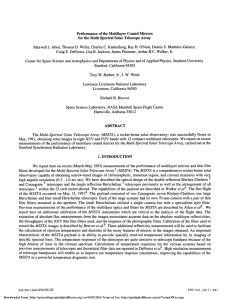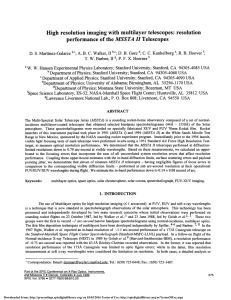Telescope Timeline Worksheet
advertisement
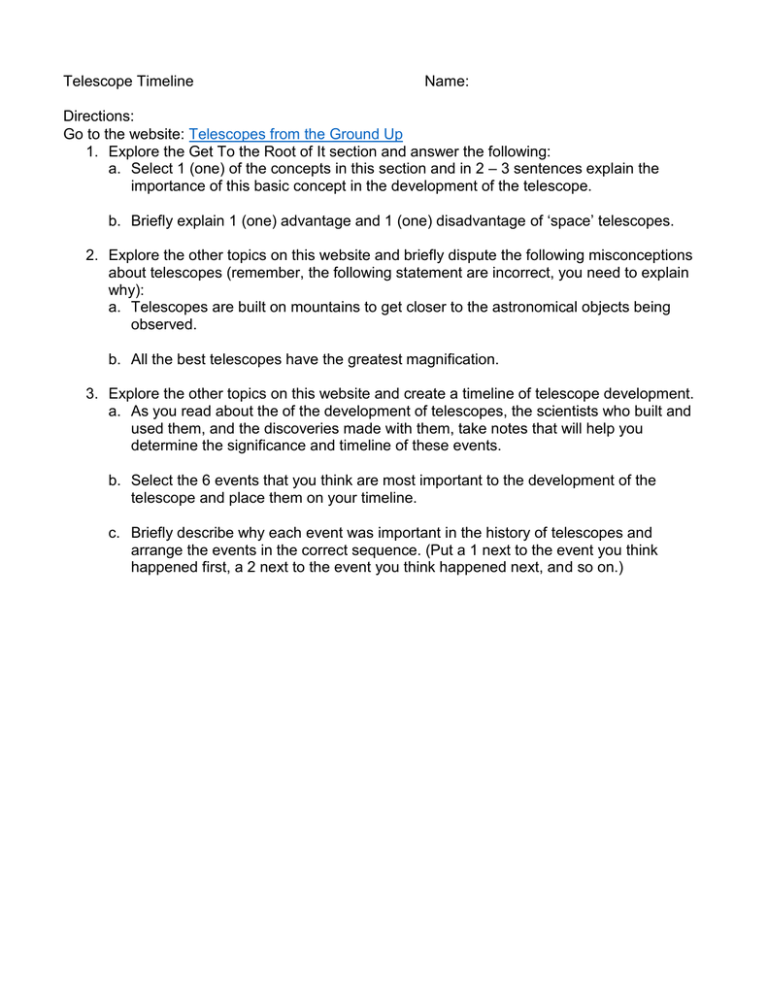
Telescope Timeline Name: Directions: Go to the website: Telescopes from the Ground Up 1. Explore the Get To the Root of It section and answer the following: a. Select 1 (one) of the concepts in this section and in 2 – 3 sentences explain the importance of this basic concept in the development of the telescope. b. Briefly explain 1 (one) advantage and 1 (one) disadvantage of ‘space’ telescopes. 2. Explore the other topics on this website and briefly dispute the following misconceptions about telescopes (remember, the following statement are incorrect, you need to explain why): a. Telescopes are built on mountains to get closer to the astronomical objects being observed. b. All the best telescopes have the greatest magnification. 3. Explore the other topics on this website and create a timeline of telescope development. a. As you read about the of the development of telescopes, the scientists who built and used them, and the discoveries made with them, take notes that will help you determine the significance and timeline of these events. b. Select the 6 events that you think are most important to the development of the telescope and place them on your timeline. c. Briefly describe why each event was important in the history of telescopes and arrange the events in the correct sequence. (Put a 1 next to the event you think happened first, a 2 next to the event you think happened next, and so on.) Rank Event Notes Why is this event important? Notes Why is this event important? The first reflecting telescope is built. Spiral nebulae are discovered. The first permanent solar telescope is built. Scientists learn how to put silver on glass. Computers control and position telescopes. For the first time, the Moon is photographed through a telescope. Rank Event The Spyglass is invented. The Hubble Space Telescope is launched. A telescope is used to discover mountains and valleys on the Moon. The first radio telescope is built. Huygens discovers the bulges around Saturn are separate rings. The first telescope with multiple primary mirrors begins observing. A lens doublet without chromatic aberration is made. A non-spherical mirror is ground.
